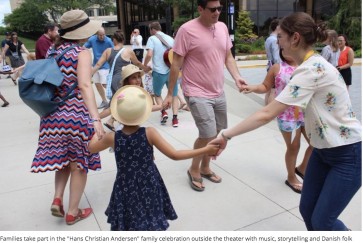In her class “Ancient Rome in Chicago,” professor of classics Francesca Tataranni challenges students to consider the thesis that Chicago’s architects modeled the city after ancient Rome.
Instead of presenting case studies of the many Roman influences in Chicago’s architecture to her classes, Tataranni wanted to find a compelling way to present them visually. She approached the Media and Design Studio (MADS) for help.
“Professor Tataranni had incredible ideas for how her course could be a great experience for students, and she knew she needed support to create a video essay and mapping interface for the architecture study,” says John Bresland, the studio’s director. “MADS helped her do that.”
Part of the Weinberg College of Arts and Sciences, MADS helps faculty build multimedia frameworks for teaching and scholarship. The meeting between Tataranni and the MADS staff resulted in an interactive, virtual tour of Chicago’s Roman architecture.
In addition to supporting faculty, MADS offers students the tools and training to choose the best medium for communicating their research, in an increasingly visual media world. Whether it’s a field recorder, camera, microphone, tripod or even the occasional vintage boom box, MADS offers all the necessary equipment needed for high-quality production.
“Our mission is to teach students how to express thought. A generation ago, that thinking would almost certainly be on the page, in the form of written research, or an essay. Now it’s a profusion of media—podcasts, video essays and documentary shorts, image-text hybrids, even student-authored video games,” says Bresland.
Explore recent MADS projects below:
Notunterkunft: A group of students studying German at Northwestern University traveled to Berlin to speak to refugees and to volunteer in the Notunterkunft Rathaus Wilmersdorf, a refugee shelter in the former town hall.
Chicago Mural Movement: A browsable archive of outdoor murals created in Chicago between 1964 and 1978, along with documentary photographs and metadata. The archive also presents a series of mural mini-stories created by students in a Northwestern first-year seminar “The Wall of Respect and Chicago’s Mural Movement.”
Visualizing Les Misérables: This site provides scholars and teachers with two visual tools for interpreting and teaching Hugo’s Les Misérables: graphs of the novel’s characters and their encounters as well as maps of sites and itineraries mentioned or described in the novel.

